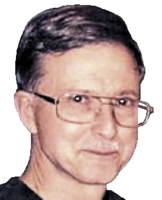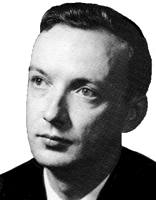
|
The Society of Folk Dance Historians (SFDH) Slavonsko kolo
Home |
About |
Encyclopedia | CLICK AN IMAGE TO ENLARGE |
Information: A dance family.
Let us go to that place, the evocative background sketch and contextual commentary which Dick Crum provides as warmup for his lovingly detailed description of the "Slavonsko kolo" genre. I can't say where my file copy of this write-up (dated 10/81) has been published. I would like to emphasize that the quoted remarks apply to one region of inland Croatia and its approach to "kolo." Other locales and other dance communities will take their own tacks.
Translation: Circle dance from Slavonia
Pronunciation: slah-VAWN-skoh KOH-loh
Other names: Slavonian kolo
Region: Croatia
BROTHERS, LET US QUOTE:
 Slavonian kolo (Slavonsko kolo), Croatia
Slavonian kolo (Slavonsko kolo), Croatia
The Slavonian kolo is danced in all parts of Slavonia, the rich agricultural plain-land of eastern Croatia. It is an archaic dance, containing elements which many dance scholars believe date back to the pre-Slavic period of Balkan history (vocal accompaniment, alternating singing and dancing, and its almost total dissimilarity from circle dances of other Slavic peoples).
Among the Slavonians themselves, the dance is known simply as kolo. The term Slavonsko kolo (SLAH-vohn-skoh KOH-loh) is generally used outside of Slavonia by folklorists, musicians, and choreographers to avoid confusion, since elsewhere in Croatia and Serbia the word kolo is a generic term for any circle or chain dance. Other Slavonian dances have quite specific names (Kalendara, Mista, Drhtavac, etc.), but when a native asks a musician to play simply kolo for him, the dance described here is the one he wants.
So deeply ingrained is the kolo in the life of the Slavonian villager, that the word itself has taken on a broader, extended meaning: it is used to refer to the whole social event that centers around the dance. When a Slavonian says, "Idem u kolo" ('I'm going to the kolo'), he means that he is going to attend the social gathering in which the kolo plays a central role; singing, drinking, and gossiping are other features of the kolo in this sense, and a person might very well "go to the kolo" and not dance at all!
An important feature of the Slavonian kolo is the chanting or singing of improvised verses known as Poskočice (POHS-koh-cheet-seh). These are usually humorous, and often satirical or sarcastic. Sometimes the Poskočice are directed toward musicians, sweethearts, relatives, or other local personages. Often they are biting, but the person at whose expense they are recited must 'grin and bear it'; he or she is powerless in the face of an old tradition according to which no one has right of retaliation for anything stated about him in the kolo (unless in the form of a retort in Poskočice verse!). Sometimes the young men or musicians improvise off-color Poskočice, and the women pretend they don't hear them. In a sense, the kolo becomes a sort of town meeting where the social life of the whole village is reflected in verse.
Usually the kolo is danced on a grassy area, a road or in front of someone's house. At carnival time young people go from house to house and dance a little in front of each. At harvest time and at weddings it is danced in people's home or courtyards.
–Michael Kuharski
SCROLL TO VIEW!
DOCUMENTS
- Croatia, a country.
- Dick Crum, an article.
- Michael Kuharski, an article.
Printed in 2017 Folk Dance Problem Solver.
This page © 2018 by Ron Houston.
Please do not copy any part of this page without including this copyright notice.
Please do not copy small portions out of context.
Please do not copy large portions without permission from Ron Houston.
